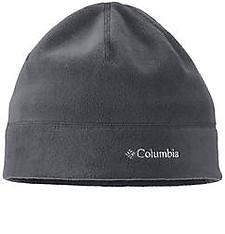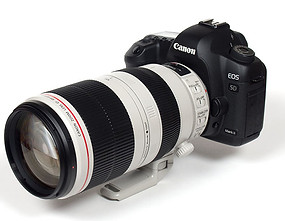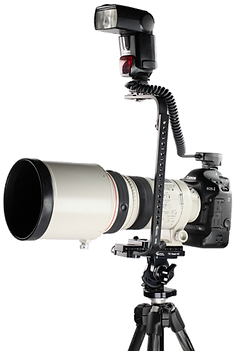Hoping you will have a memorable experience we would love to share some recommendations with you
General Tips when traveling to Ecuador:
- Area: Ecuador is a representative democratic republic in northwestern South America, bordered by Colombia on the north, Peru on the east and south, and the Pacific Ocean to the west. With 283,561 km2 (109,484 sq mi) Ecuador is one of the "relatively" small to medium size countries of South America. It also includes the Galápagos Islands in the Pacific, about 1,000 kilometers (620 mi) west of the mainland. The capital city is Quito.
- Temperature and elevation: The climate of Ecuador is, in general, hot and subtropical.
Temperature changes little between seasons but varies each day during night or daytime. In most Lifer Nature Tours we will spend more time in the chilly part of Ecuador, which is known as the cloud forest and the temperature ranges from 8 C. (46 F.) during the night to 22 C. (72 F.) during the day on an elevation of 1000 to 2500 meter above sea level (3200 to 8200 ft).
Above 3,500 m (11,500 ft) the temperatures regularly reach freezing during the night or when the skies are overcast and the wind blowing (you will require heavy jackets for cold weather and sometimes raincoats too). Especially in the high-elevation grassland (over 3,800m or 12,500 ft) in the Andes. In most tours, we will highly recommend visiting this ecosystem due to the wonderful endemic species you can find there but spending the night in lower elevation cloud forest habitat.
The hottest temperature we will be on a regular itinerary is the Amazon lowland where the temperature when the sun is shining around noon, can easily shoot up to 30 to 35 C (86F), with higher temperatures during the dry season. But when it rains or in the evenings, the temperatures fall rapidly and become very pleasant 24C (75F). At night, temperatures go one or two degrees lower and you might need a light blanket. In the mornings, it usually does not get hot before 10 o'clock.
Then in most Lifer Tours Itineraries, we visit the foothills of Wildsumaco where the temperatures range from 18 C. (60 F.) during the night to 25 C. (73 F.) during the day.
Rain: Rainy season is very variable in general across the Andes and we generally say lasts from December to May, and Dry Season from June to December. But this is very unpredictable because of the Andes Mountain Range and we might get at least some rain (it all depends on the winds) so is better to get rain gear.
Now, it is not true that it rains all the time. In fact, in the course of a day, most of the time it does not rain, even though on most days (especially in Amazon) there is at least one shower. For the unlucky ones, occasionally, there are days that it hardly ever stops raining, but that does not happen too often. If you are prepared for the worst, then every hour of sunshine will be a joy, and most of you are likely to have many hours of joy.
- Language: Spanish is the official language of Ecuador. Many Ecuadorians who work in tourism, whether as a guide, receptionist, or waiter, typically speak at least some English.
- Currency: The currency in Ecuador is the US Dollar. Larger bills such as 50′s and 100′s are typically not accepted in souvenirs or stores so if you want to bring some it is best to bring $20 bills or less. ATMs accept major credit cards and are available in the cities and larger towns.
- Electricity: For chargers, electrical outlets are the same as in the USA although 3-prong outlets are not as prevalent. Voltage is also the same as the US, 110 Voltage AC at 60 Hertz.
- Health Issues: There are no vaccination requirements in order to enter Ecuador although some are recommended. Yellow fever is one. Although not mandatory if you are coming from a Yellow fever-free country many other countries that do not require yellow fever vaccination for entry, do require proof of the yellow fever vaccine if coming from an infected region. That means that if after your trip to Ecuador, you want to travel to Costa Rica, for example, you will need the yellow fever proof, to show evidence to the authorities that you are not potentially carrying the disease along.
The vaccine is recommended for travel outside urban areas, especially in yellow fever endemic zones, and has to be shot 10 days before your trip.
- Chiggers: These are small mites that burrow into your skin and cause redness and itching. They are frequently encountered in the Southern US. They are relatively harmless but can be a real nuisance and are abundant in the cattle pastures of Ecuador, especially in the lowlands. Spraying your trousers, socks, shoes, and waste line with repellant such as Deep Woods Off containing Deet (N, N-Diethyl-meta-toluamide) is a good deterrent. Anti-itch cream is about all you can do for them once the redness and itching begin.
- Safety and Theft: Common sense will go a long way in Ecuador regarding safety and theft. Make sure that you lock your rooms when leaving, do not leave valuables exposed while you go into the field, do not leave your camera and binoculars at the lunch table unattended, keep an eye on your luggage in exposed areas such as at the airport, etc. Many hotels provide a lockable safe in the room or at the front desk, usually at an added expense, where you can store valuables safely. It is probably wise to carry your important documents and money with you, even into the field. A copy of the passport is also useful to keep it somewhere separate from the original.
- While in the field, remember that though rarely encountered there are poisonous snakes, not to mention the more numerous ants, wasps, and the like. Do not walk in sandals into the forest or secondary growth, especially at night, and take a flashlight along at night if you cannot see where you are stepping.
- Water: Most of the lodges that we recommend have safe tap water you can drink. If unsure, just ask at the reception of the lodge or the guide upon arrival and they will tell you if it is safe to drink. Giardia is the most often encountered intestinal parasite. The local pharmacy, (Drugstore), can supply you with the necessary medicine if you explain your symptoms.













Recommended items to bring to your adventure
- Passport: To enter Ecuador you will need a valid passport that will not expire after 90 days upon arrival to Costa Rica. However, some International flights require a passport that is valid for at least 6 months from your departure to Ecuador. It would be best to follow the latter to be on the safe side.
It is always a good idea to make a copy of your passport and put it somewhere separate from your actual passport.
- Binoculars: Waterproof types are best. The most common use in the tropics is 8x32 or 10x42. Your guide will supply his own spotting scope for you to use.
- Birds Book: “The Birds of Ecuador. Field Guide” by Ridgely R.S is the most recommended bird book for the field when birding Ecuador. Although is heavy and not very practical in the field I will say buying the version of "only color plates" is more practical because is compact and easy to use, or you can remove the "text pages" yourself.
- Camera and film: Compact zoom cameras are usually more comfortable for a birding trip as they are more versatile and not so heavy. Also, a cell phone camera can be useful to take pictures through the spotting scope of your guide. Especially with the new smartphones.
If you are thinking of taking one of our multiple options for a bird photography trip and want specific details on the gear please read carefully below (if not please skip the next four "DSLR" points):
- DSLR Camera body: the best you have is good here but if you have several options to choose we will recommend the lighter weight one (Canon 7d over 1d for example) as the weight will be a limiting factor sometimes. The advantages of ISO of these two cameras might look too short to compare with the outstanding winning on having less weight in your back and a little extra reach on the crop factor of the not-full frame cameras. Unless you are planning on not walking at all (which is possible but please let the guide know beforehand).
- DSLR Camera Lens: On ideal conditions for bird photography two lenses will be best. One, the longest-range lens you own, is best for "short walking around" photography. This is a very common way to do bird photography in some areas of Ecuador, such as the gardens of Guango Lodge or Wildsumaco. The average appropriate "long lens" will be ranging from 400mm to 800mm (or even longer than that if you own that kind of monster... in here the longest is the best). Most of the targets we get in gardens, forest edges, and open roads will be small to medium-sized birds like tanagers, hummingbirds, and distant Toucans perching way up in tree-tops.
The second lens should be a short prime lens, let's say a 300mm f2.8 will be ideal, or even a 200mm f2. This is the second most common type of bird photography here and that is what our guides at Lifer Tours will call the "sit and wait at a feeder" photography. This basically consists of finding a good spot, sitting down, and taking photos of the birds that compete for Bananas and Papaya at a feeder. In this type of bird photography, the birds will be relatively close and species will be rotating as they move around so sitting and waiting might produce some of your best shots of the trip. Especially if the perches are set properly by your Lifer´s local guide.
In case you are a lightweight photographer (don't complicate having more than one lens in your luggage) or a "birdwatcher that likes taking photos" using a versatile mid-range zoom lens is a good idea. A 100-400mm or 300mm + 1.4xTC is a good idea. That way you just change your zoom depending on your subject either in a feeder or just by walking around.
Of course, outside birds and mammals, plenty of other targets are a lot of fun to try. So one Macro Lens and one general Landscape lens will be a great addition if you have some extra space in your luggage.
- DSLR Camera Tripod: A Tripod is always important and the only reason for not taking a tripod is if you are a lightweight bird photographer, so if you have only 100-400mm or a lighter than that you better not take a tripod you will be losing the advantage o shooting handheld (great advantage in the dense forest). A, any way you will appreciate the support of a tripod when shooting birds at the feeders, as this will give very comfortable support and that extra sharpness to your images.
- DSLR Camera Flash: Flash is always useful. Although not mandatory many people don't like to use flashes when shooting birds, and that is ok flash might not be necessary when shooting on feeders with good light or very distant birds. Also if you don't like disturbing birds' natural behaviors (because, yes the flash does disturb the birds, especially the forest species that are quite sensitive to the light). But is essential on many occasions when shooting on trails or early morning/late afternoon. But be careful, read carefully the following sentence regarding the use of flash: "Bringing just a flash to place on the bracket of the camera with no previous experience of using on the field does not worth the weight".
If you want to shoot with flash you will like to add Better Beamer (see here https://www.amazon.com/X-Tender-Better-Beamer-FX-3-Booster/dp/B000SLNNG4) to increase the range of the light of your flash and/or a "off-camera flash bracket" for removing that annoying red eyes and "artificial burn light" on the bird feathers. Using these two extra toys is only if you like complicating your life a little bit with added staff on your camera gear. Overall remember, this is (in 98% of our customers) an activity we do for fun. And if you don't do flash normally at home you don't have to do it just because you are here in the tropics. A hobbyist bird photographer can spend a whole trip shooting without a flash and still get the most amazing photos any professional bird photographer would dream of having. Especially if your Lifer Bird Guide takes you to the right places for bird photos without a flash. Also remember some specific places or situations that can't be taken with flash (birds at the nest, certain hummingbird feeders, birds displaying, etc.). So before shooting with a flash always ask if this is allowed in the particular situation.
- Clothing: Long pants and long-sleeved shirts are best to deter any insects and minor scratches from the vegetation. The new, lightweight outdoor variety is very comfortable and dries quickly. Shorts and T-shirts can also be useful. A lightweight jacket will be welcomed in the middle elevations and a fleece or medium-weight jacket for visiting the highlands. Laundry can be done at most of the lodges for those wanting to travel light.
- Shoes: Lightweight hiking boots will be invaluable, preferably waterproof Gortex boots. Sandals are useful around the lodges and beach but should not be worn on the forest trails.
- Raingear: Umbrella or Poncho, whichever you feel is more practical; rain suits can be quite uncomfortable in the lowlands. All Lifer Nature Tours Guides prefer an umbrella as you can use binoculars with the umbrella but not a poncho. Also using a Poncho or Raincoat in humid lowlands can be hot.
- Sun Protection: Sunscreen, Hat, and Sunglasses.
- Mosquito Repellent: Although mosquitoes will not be a problem in most of the areas you visit in Ecuador it is still nice to have your own supply on hand when they are encountered. Repellent containing “Deet” works best such as Deep Woods Off. Deet is mildly poisonous but if used modestly poses no threat. It is not necessary to spray profuse amounts before going into the field unless you are hiking in chigger-infested areas like cattle pastures in some hot humid lowlands.
Mosquitoes are normally not a problem in your hotel room as all hotels have screens in the windows to prevent mosquitoes from getting inside. Is good to always keep the door and windows closed (especially at night) as the mosquitoes might get in and cause some problems at night.
- Toiletries: Best to bring these with you but supermarkets in CR do carry a wide variety.
- Medications: Mainly prescription items, pharmacies and supermarkets have a wide variety of over-the-counter medicines that are quite effective.








One of the most recommended lenses during our tours for serious hobbyist bird photographer is the 600mm f4 (either Canon or Nikon)




Tan, green or brown colors are best. Better avoid bright colors as might attract more insects and might disturb some sensitive birds.




Hope you find this useful. And please let us know if you have questions. Best regards from the tropics!

